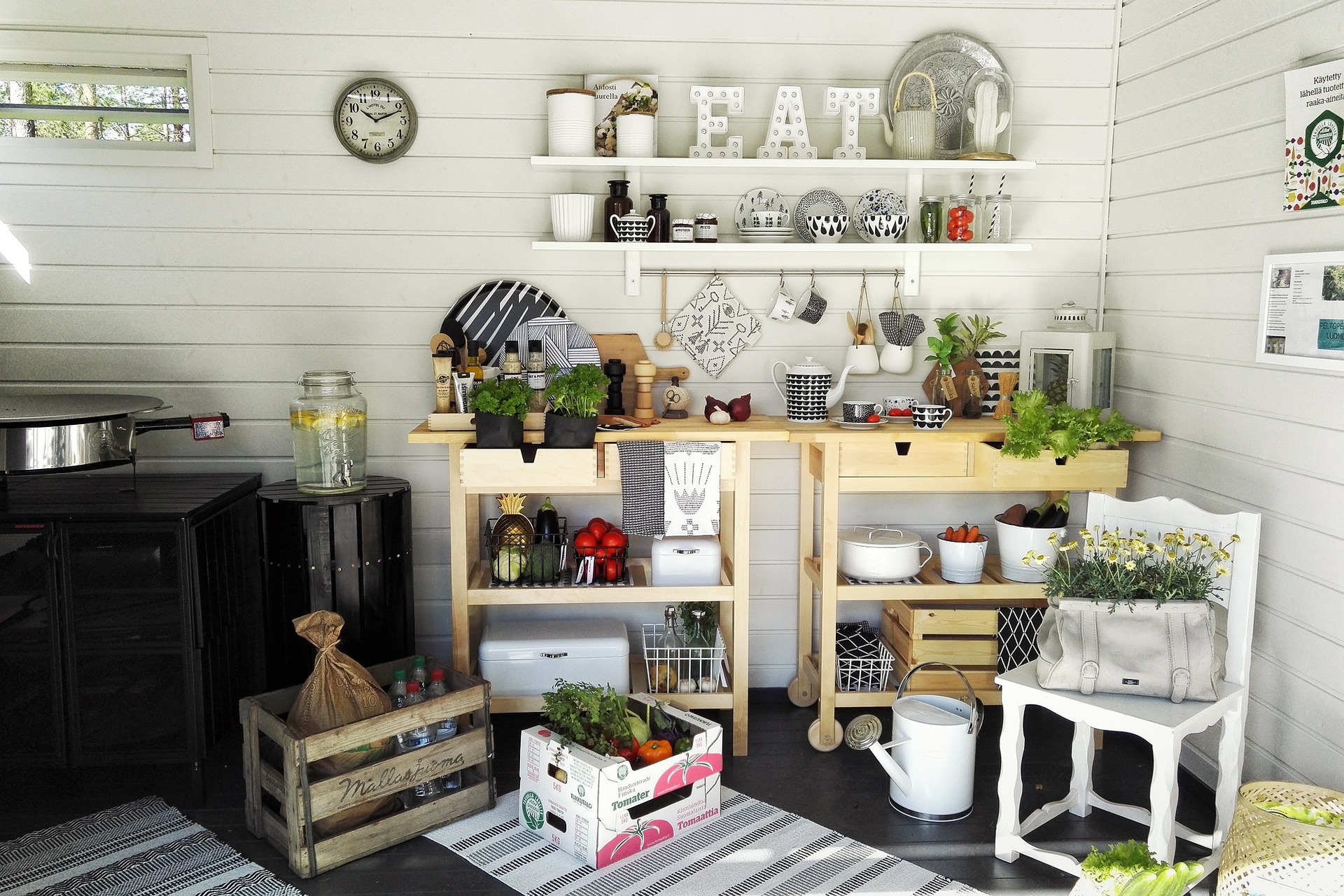Whimsical Wabi-Sabi: Embracing Imperfection in Home Design
In a world obsessed with perfection, a captivating design philosophy is taking root in American homes, challenging our notions of beauty and order. Imagine walking into a living room where a weathered wooden table proudly displays its knots and cracks, or a garden where asymmetrical plants grow freely in artfully mismatched pots. Welcome to the enchanting world of Whimsical Wabi-Sabi, a design trend that celebrates the beauty of imperfection and the charm of the unexpected.
The Origins of Whimsical Wabi-Sabi
The roots of this trend can be traced back to ancient Japanese philosophy. Wabi-sabi, a worldview centered on the acceptance of transience and imperfection, emerged from Buddhist teachings. It values simplicity, naturalness, and the beauty of age and wear. This concept has long influenced Japanese art, architecture, and design, emphasizing rustic elegance and the appreciation of objects that bear the marks of time.
Whimsy, on the other hand, has its origins in Western culture, often associated with fantasy, playfulness, and unconventional creativity. It encourages thinking outside the box and finding joy in the unexpected. By combining these two seemingly disparate concepts, Whimsical Wabi-Sabi creates a unique design language that balances tranquility with excitement, and imperfection with intentionality.
Key Elements of Whimsical Wabi-Sabi Design
To incorporate Whimsical Wabi-Sabi into your home, focus on these essential elements:
-
Embrace imperfection: Celebrate objects with visible wear, cracks, or asymmetry. This could include distressed furniture, hand-thrown pottery, or weathered textiles.
-
Incorporate natural materials: Use raw, unfinished wood, stone, clay, and other organic materials to bring a sense of earthiness to your space.
-
Play with asymmetry: Avoid perfectly matched sets or rigid arrangements. Instead, opt for a more organic, free-flowing layout.
-
Add whimsical touches: Introduce unexpected elements like quirky sculptures, playful patterns, or surprising color combinations to inject a sense of fun.
-
Cultivate mindfulness: Create spaces that encourage reflection and appreciation of the present moment, such as a cozy reading nook or a simple meditation corner.
Whimsical Wabi-Sabi in Different Rooms
This design philosophy can be adapted to various areas of the home, each with its unique interpretation:
Living Room: Combine a weathered leather sofa with mismatched, colorful throw pillows. Display a collection of found objects or handmade crafts on an unfinished wooden shelf.
Kitchen: Use open shelving to showcase a collection of handmade ceramics in various shapes and glazes. Incorporate a live-edge wooden countertop or island to add natural texture.
Bedroom: Layer bedding in complementary but not matching patterns and textures. Add a whimsical touch with an oversized paper lantern or a hand-painted mural.
Bathroom: Install a vessel sink made from natural stone with visible imperfections. Use reclaimed wood for shelving or a vanity, and add pops of unexpected color through accessories.
Garden: Create an enchanting outdoor space with meandering paths, asymmetrical plant arrangements, and repurposed objects as planters or garden art.
The Psychology of Whimsical Wabi-Sabi
Embracing Whimsical Wabi-Sabi in home design can have profound effects on mental well-being. This approach encourages mindfulness and presence, as it draws attention to the beauty of the moment and the subtle details of our surroundings. By celebrating imperfection, it can also help alleviate the stress and anxiety often associated with striving for flawlessness.
The whimsical elements of this style promote creativity and playfulness, which are essential for reducing stress and enhancing overall happiness. Moreover, the emphasis on natural materials and textures can create a sense of connection to the earth, promoting a feeling of groundedness and calm.
Sustainability and Whimsical Wabi-Sabi
One of the most compelling aspects of this design trend is its inherent sustainability. By valuing imperfection and age, Whimsical Wabi-Sabi encourages the use of secondhand or repurposed items, reducing the demand for new products. It also promotes the use of natural, biodegradable materials, which have a lower environmental impact than synthetic alternatives.
Furthermore, the philosophy behind this style encourages a shift away from consumerism and the constant pursuit of the new and perfect. Instead, it fosters an appreciation for what we already have, potentially reducing overconsumption and waste.
Incorporating Whimsical Wabi-Sabi on a Budget
Adopting this design style doesn’t have to be expensive. Here are some budget-friendly ways to bring Whimsical Wabi-Sabi into your home:
-
Thrift store treasure hunts: Search for unique, imperfect pieces at secondhand shops and flea markets.
-
DIY projects: Create your own wabi-sabi inspired art or furniture using natural materials or by upcycling existing items.
-
Nature walks: Collect interesting stones, branches, or leaves to display as free, natural decor.
-
Embrace your existing imperfections: Instead of replacing items with wear and tear, learn to appreciate their unique patina.
-
Handmade touches: Incorporate simple, handmade elements like woven baskets or hand-painted pottery.
The Future of Whimsical Wabi-Sabi
As society continues to grapple with the pressures of perfection and the environmental impacts of consumerism, Whimsical Wabi-Sabi offers a compelling alternative. This trend is likely to evolve, incorporating elements of other design movements and adapting to changing lifestyles.
We may see an increase in the use of biophilic design principles within this style, further emphasizing the connection between humans and nature. Additionally, as technology becomes more integrated into our homes, there could be interesting juxtapositions between high-tech elements and wabi-sabi aesthetics.
Whimsical Wabi-Sabi represents more than just a design trend; it’s a philosophy that encourages us to find beauty in the imperfect, joy in the unexpected, and peace in the present moment. By embracing this approach in our homes, we create spaces that are not only visually intriguing but also emotionally nourishing and environmentally conscious. As we move forward, the principles of Whimsical Wabi-Sabi offer a roadmap for creating living spaces that are truly in harmony with both our inner selves and the world around us.






